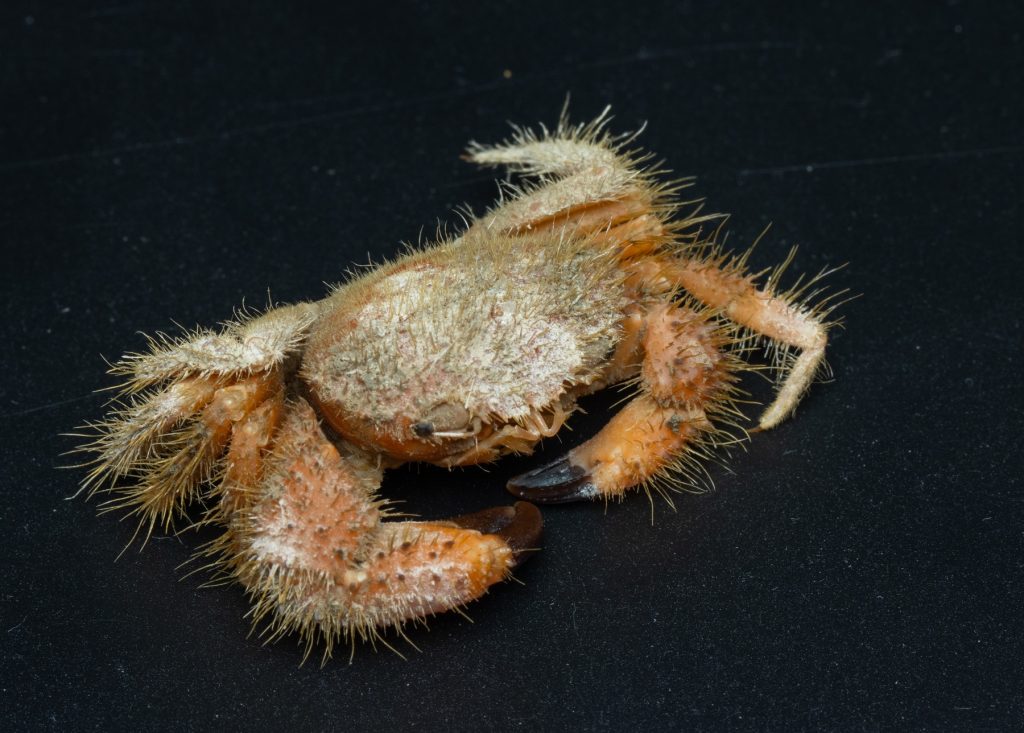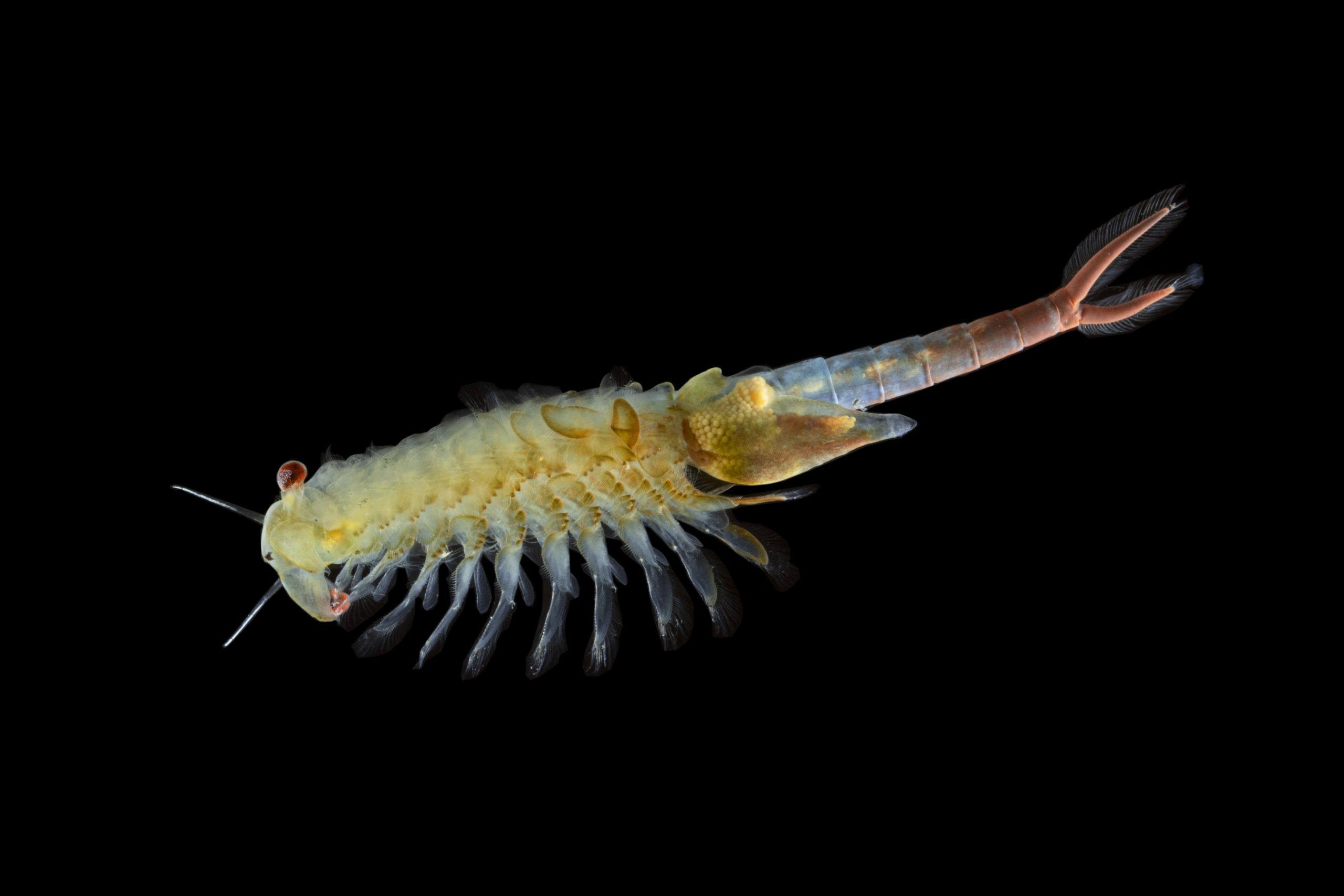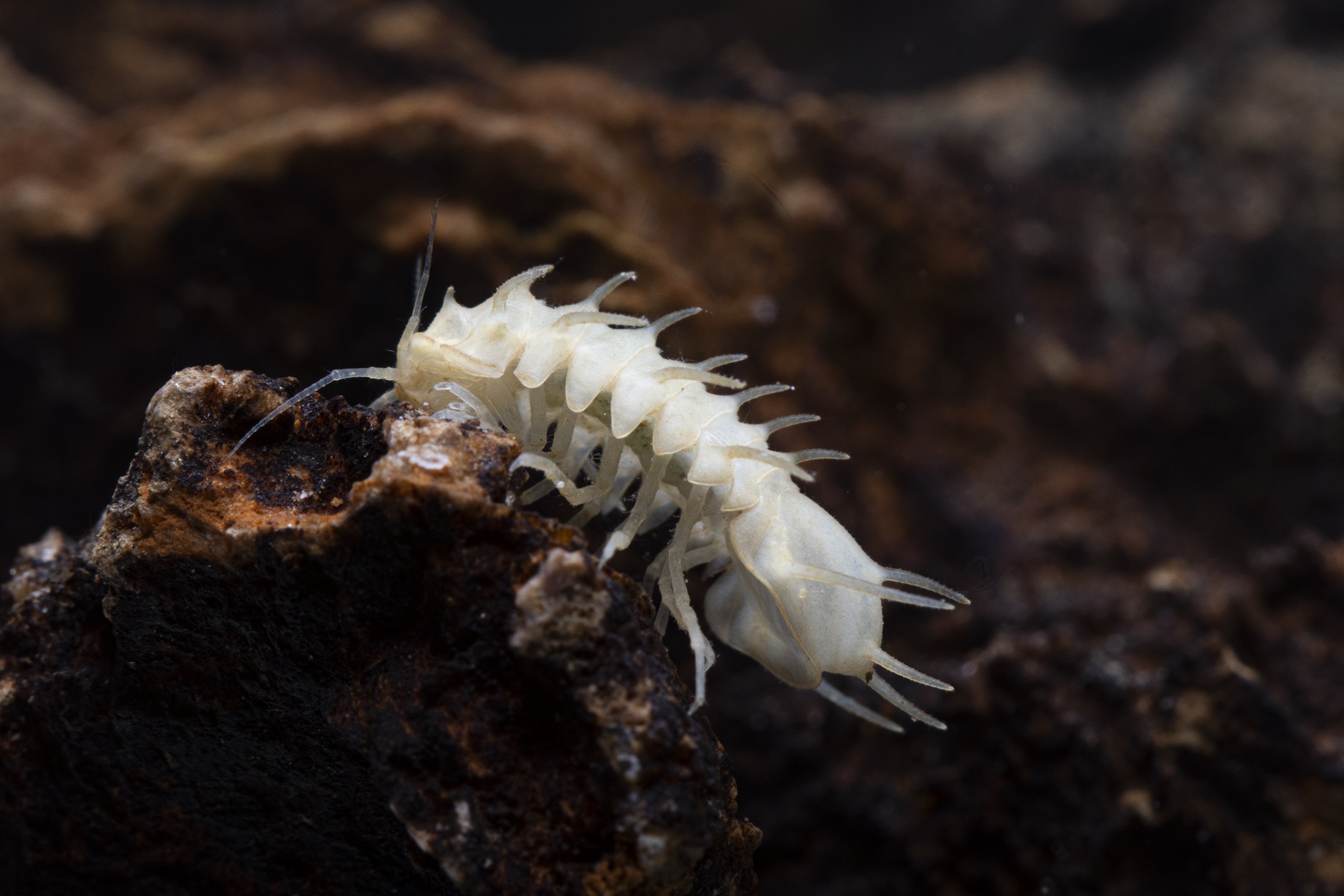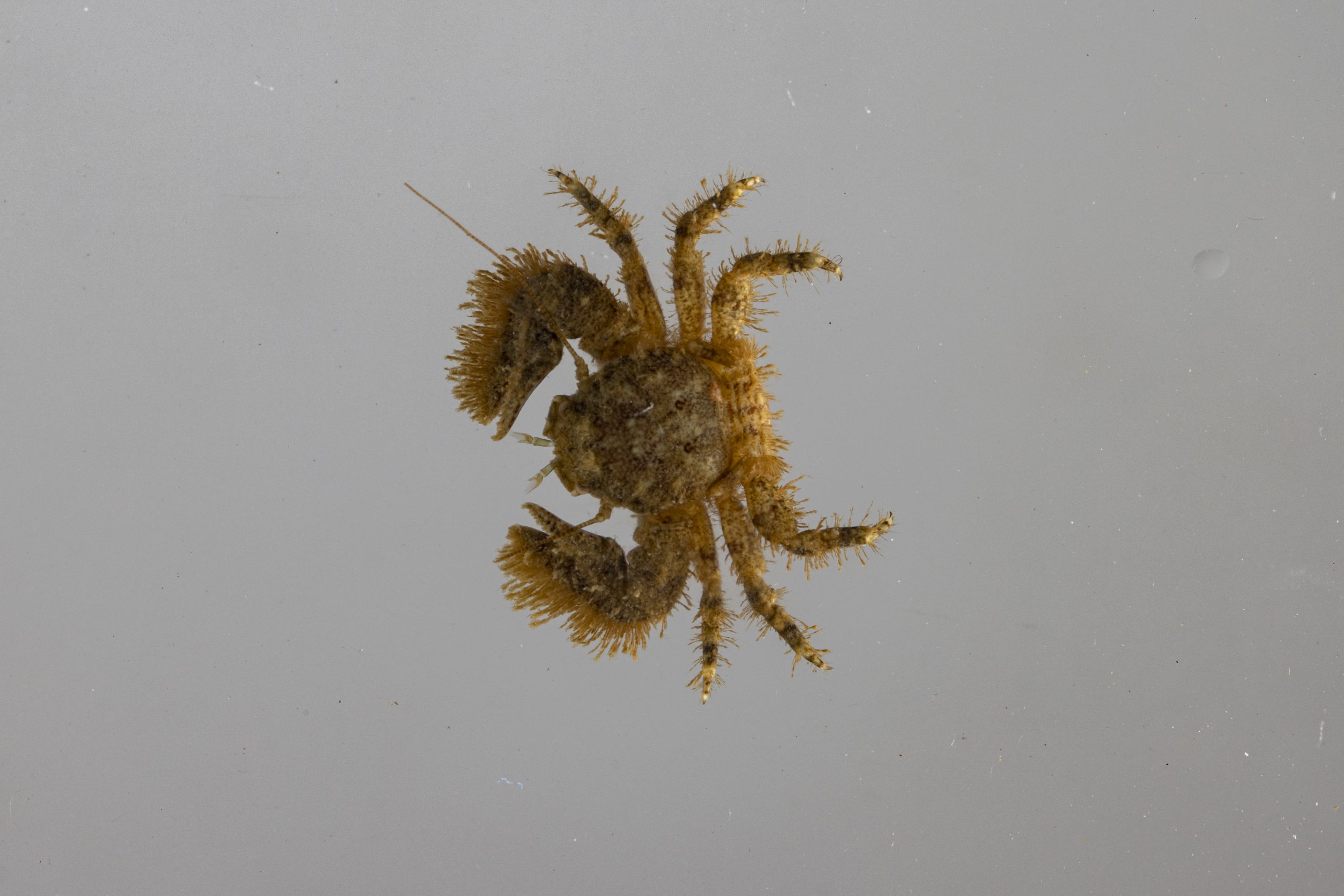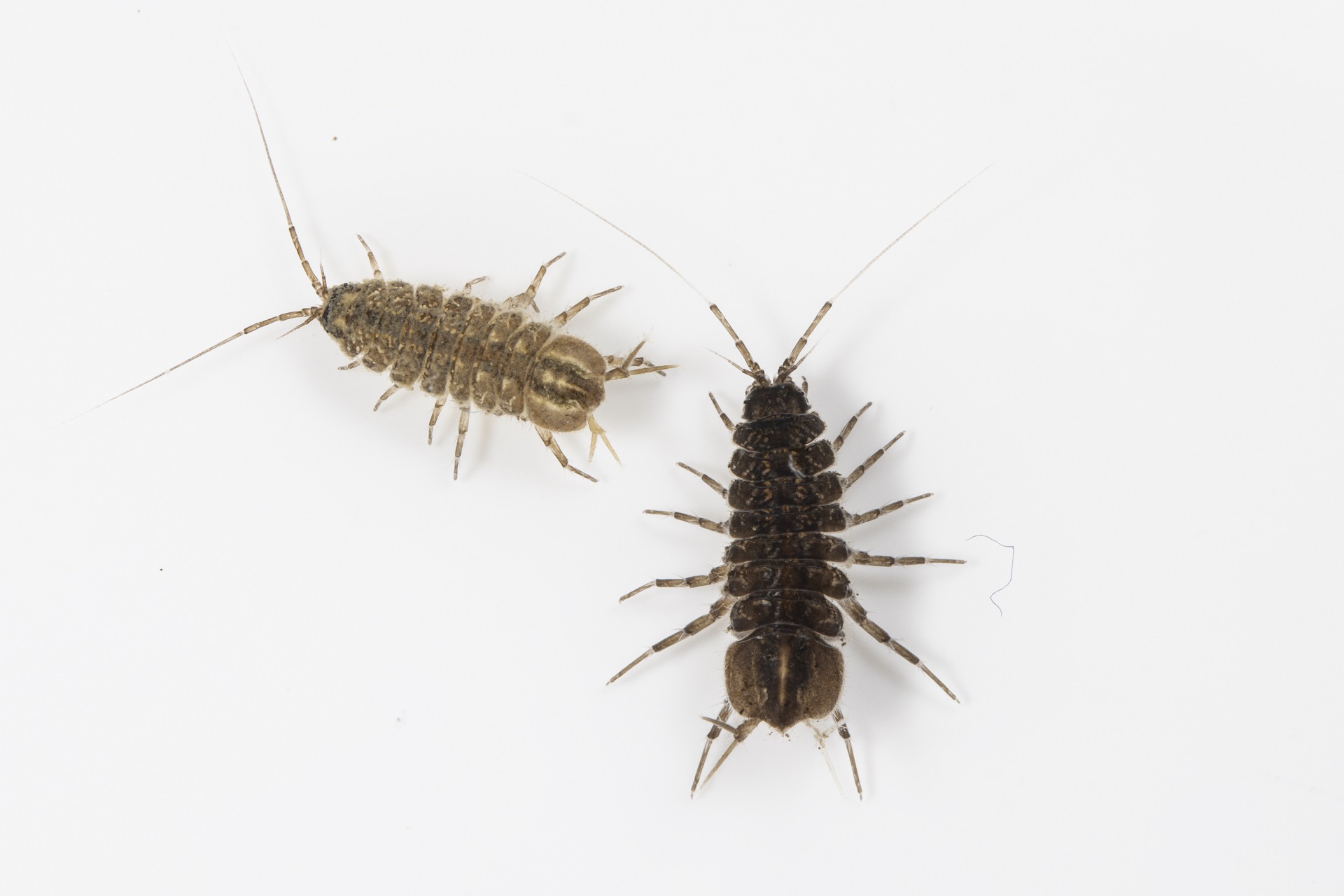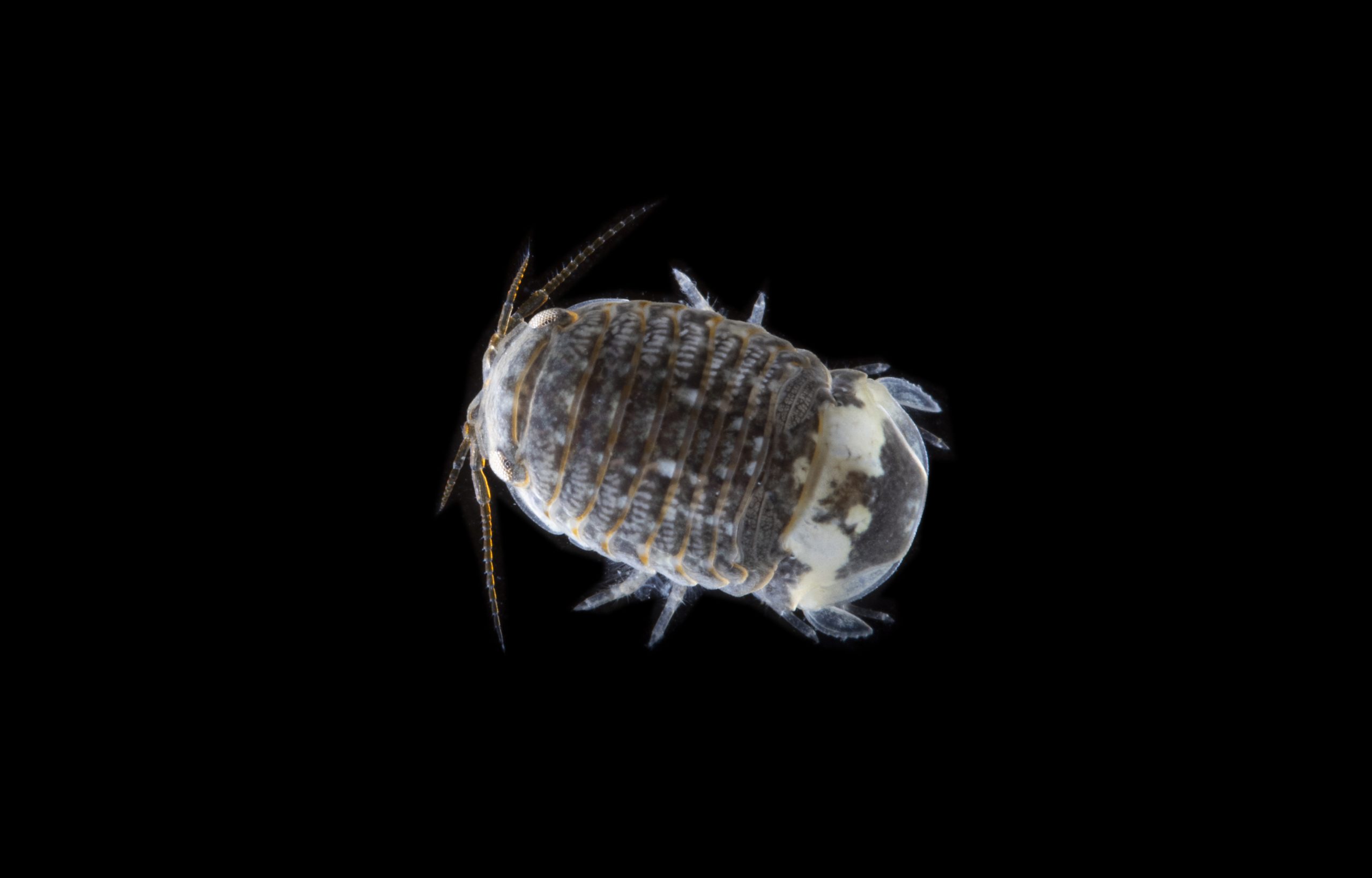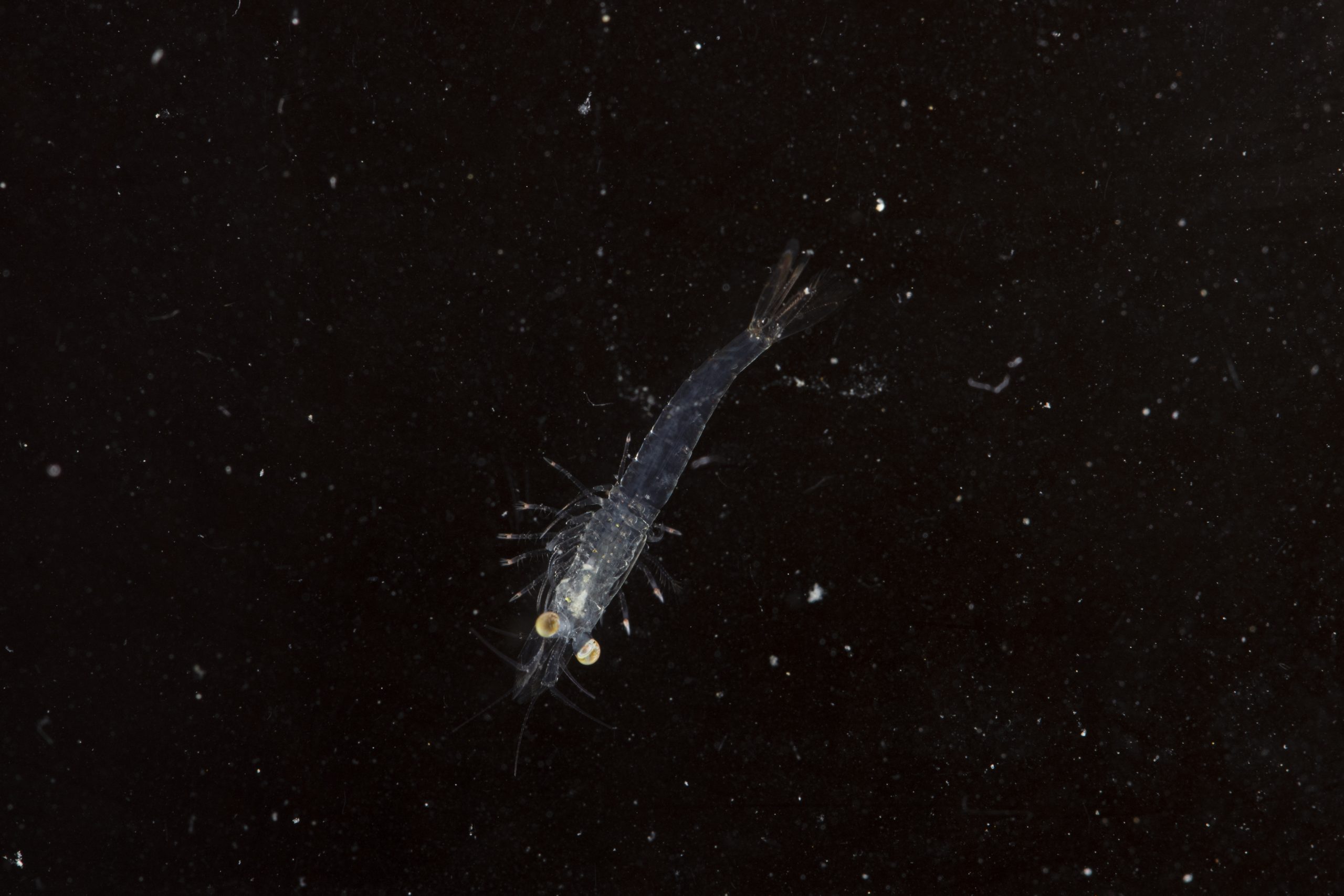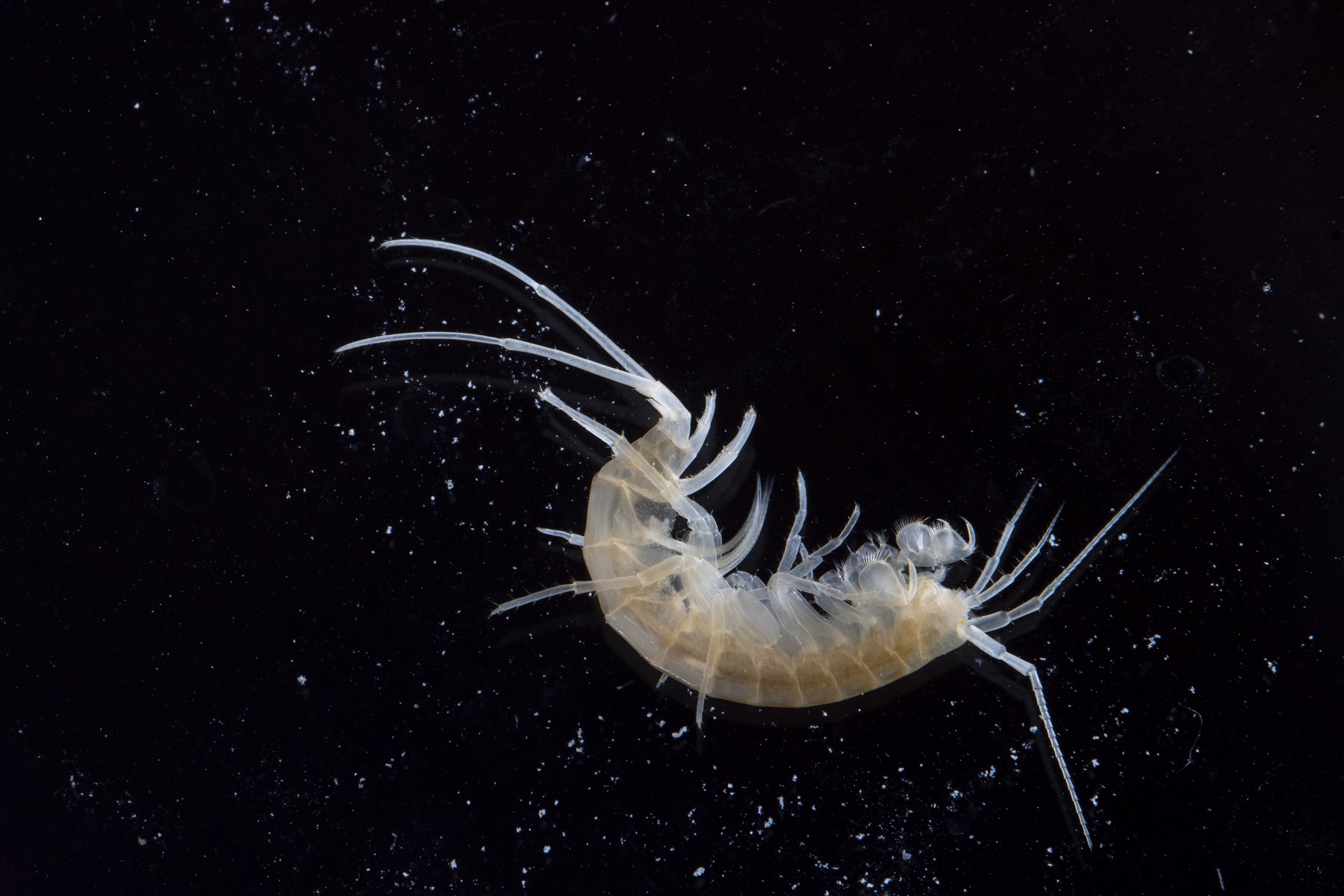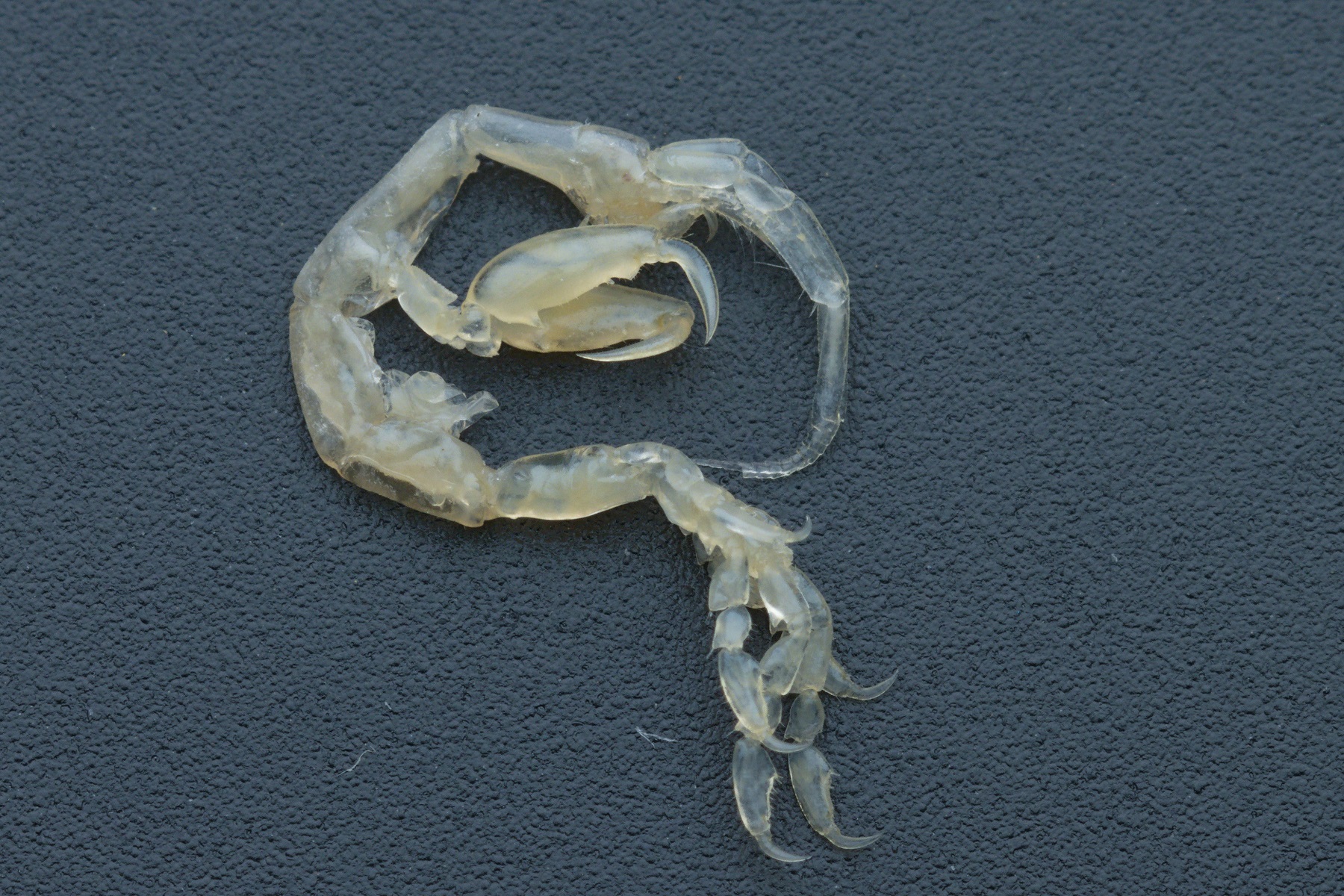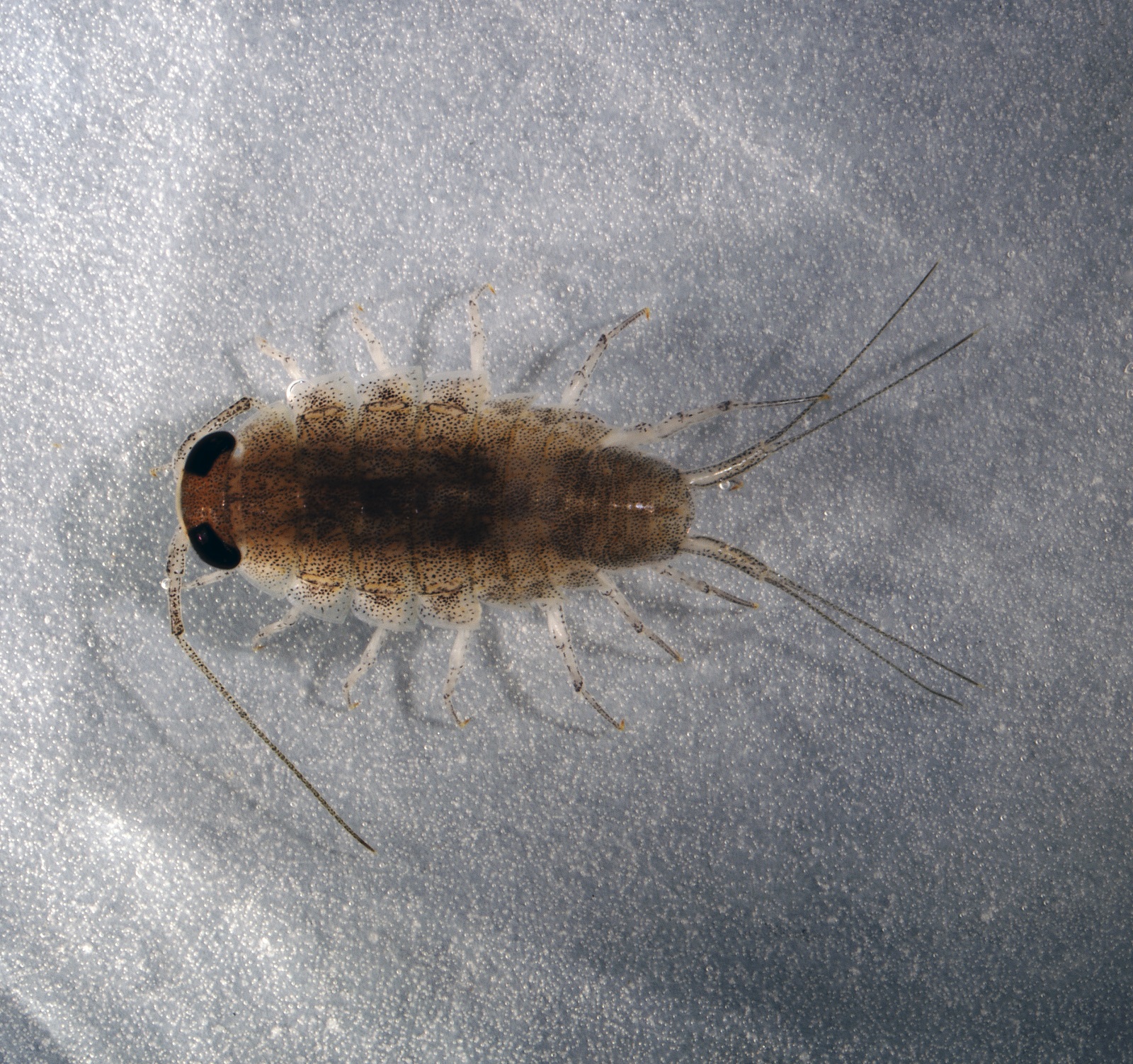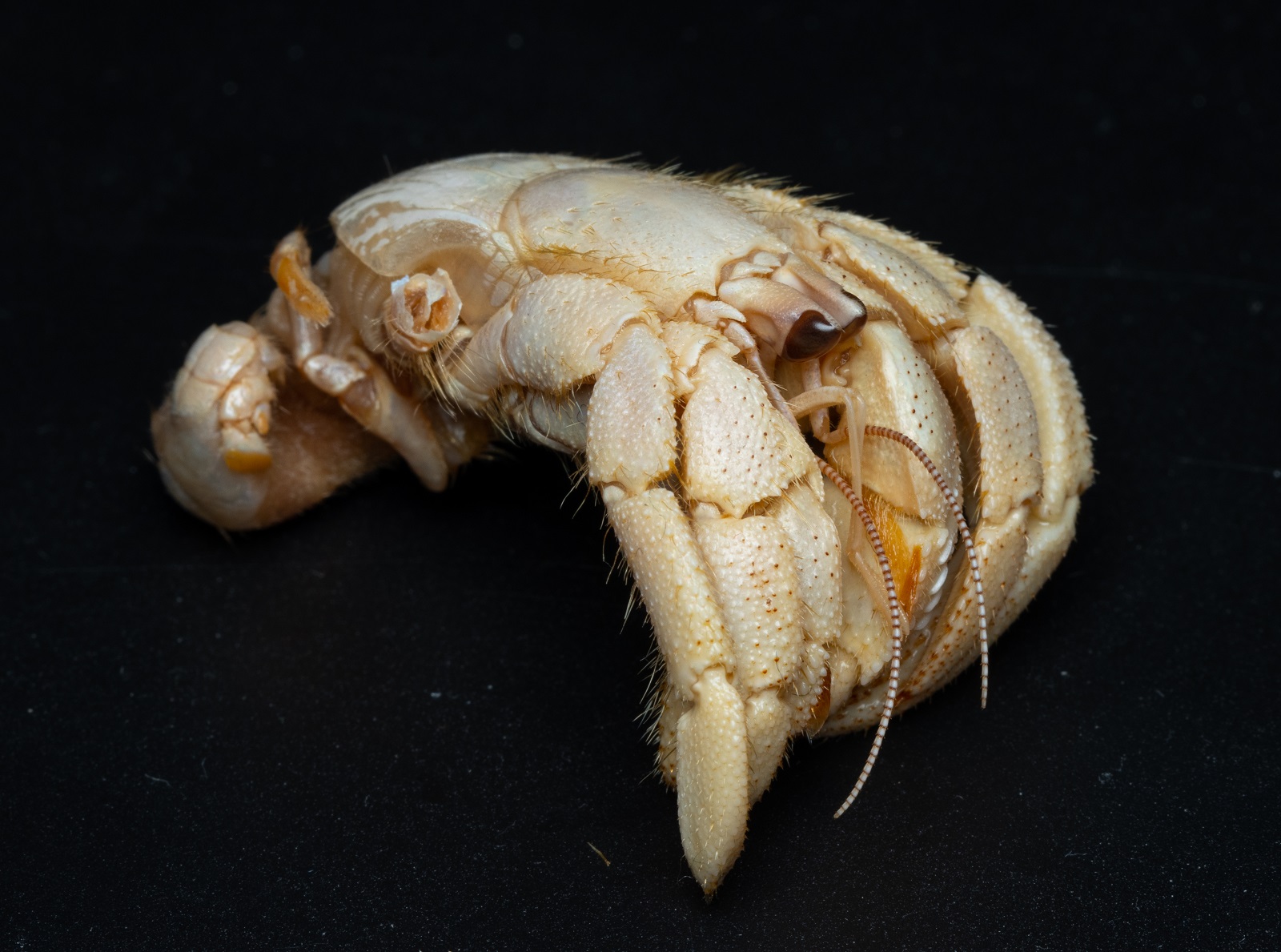- Crustaceans
Pilumnus hirtellus
Bristly crab is a small crab (Brachyura) belonging to a family Pilumnidae. It is recognized by its reddish-brown color, dense covering of bristles (setae) and black tips of its chelae (claws). As in all decapods, its body consists of a cephalothorax, pereon and pleon (abdomen). The abdomen in crabs is short and folded beneath the pereon. Both cephalothorax and pereon are covered by a uniform carapace. The carapace can be up to 28 millimeters wide.
The cephalothorax is comprised of an acron and eight body segments. Besides a pair of stalked compound eyes, it bears two pairs of antennae (antennae I and II), a pair of mandibles, a pair of maxillae I, a pair of maxillae II and three pairs of maxillipeds. The mouth parts are organized into a compact mouth apparatus.
The pereon consists of five segments and has five pairs of walking legs (pereopods). The first pair is the most pronounced and terminate distally with chelae. The rest of the legs terminate with simple claws and allow the animal fast walking along the seafloor.
The abdomen consists of six segments and a telson. The appendages on the abdomen (pleopods) are reduced. The exception is the first pair in males and first two pairs in females which function in the transfer of sperm and carrying of eggs.
The bristly crab is distributed from the North Sea along the western European coasts of the Atlantic ocean into the areas of the Mediterranean and Black Sea. The species is relatively common in Slovenian sea. It lives at depths of up to 80 meters but prefers shallow waters of up to 10 meters. It is absent in the intertidal zone. It inhabits different types of seabed but prefers rocky and muddy bottom.
It primarily feeds as a scavenger. The females carry up to 4000 eggs. The larvae termed zoeae hatch from the eggs between May and September. Shortly before the metamorphosis into adult crabs the zoeae develop into the next larval stage called megalopa.
More photos
Related arthropods

Authors
- Urban Bogataj,
- Gregor Bračko,
- Teo Delič,
- Cene Fišer,
- Žiga Fišer,
- Rok Kostanjšek,
- Rudi Verovnik,
- Miloš Vittori,
- Valerija Zakšek.
Students Vito Ham, Vesna Jurjevič, Gaj Kušar, and Adrijan Samuel Stell Pičman also participated in the project.
